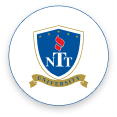The explosion of generative Artificial Intelligence (AI) tools like ChatGPT and Gemini has sparked a revolution across many fields, especially in education. AI is not just a technological trend; it’s a tool with the potential to fundamentally change how we access, absorb, and share knowledge. However, a big question is emerging in academic settings: Are teachers wary of, or even outright banning, AI? Do they see it as a formidable “enemy” of traditional education?
AI: An Invaluable Learning Aid
Anyone who views AI as merely a tool for cheating is overlooking a crucial aspect: it is a powerful assistant that can elevate the quality of teaching and learning. AI has the ability to personalize learning, analyzing each student’s proficiency and learning style to provide a tailored study plan, assignments, and materials. For example, a student struggling with grammar could be recommended in-depth exercises on sentence structure, while a student needing to improve their vocabulary could receive specific context-based vocabulary drills.
Furthermore, AI promotes interactive and creative learning. AI chatbots act as virtual tutors, helping students practice language skills and answering questions 24/7 in a personalized way. Students can also use AI to create presentations and innovative projects with unique visuals and content, fostering multidimensional thinking. Beyond that, AI helps enhance teaching effectiveness for instructors. By significantly saving time on grading, assessment, and creating diverse learning materials, teachers can dedicate more time to directly interacting with students, inspiring them, and tackling complex issues.
The Double-Edged Sword: AI Misuse and Its Consequences
Despite its many benefits, the misuse of AI is becoming an alarming issue in education. Many students are using AI as a shortcut to complete assignments, essays, and even final projects without personal effort or critical thought.
This reality isn’t just anecdotal. According to a 2023 survey by BestColleges (USA), 50% of students who were aware of AI admitted to using it for academic dishonesty. Another study from Stanford University also shows that an over-reliance on AI significantly diminishes students’ critical thinking and problem-solving skills.
If left unchecked, AI misuse will lead to serious and long-term consequences. Students will gradually experience a decline in independent thinking, becoming lazy and losing the ability to analyze, synthesize, and form their own opinions. They get used to receiving ready-made answers instead of doing their own research and reasoning. This could create a generation of “knowledge-malnourished” students—those with diplomas but lacking the foundational knowledge and practical skills necessary for their careers and lives. Moreover, copying content from AI without proper citation or modification is a serious form of academic dishonesty, undermining the integrity and fairness of the academic environment.
Solution or Prohibition?
Faced with these challenges, many teachers are taking a cautious, or even exclusionary, stance toward AI. They are concerned about being unable to accurately assess students’ true abilities and are losing faith in academic outcomes. However, an outright ban is not a solution. In reality, AI is a part of the modern world, created to support humans in life. Banning AI is no different than rejecting an inevitable truth.
Instead of a confrontation, we need to find ways to collaborate with AI. First, educational institutions should change their assessment methods, designing assignments that not only test knowledge but also demand critical thinking, personal viewpoints, or a combination of theoretical and practical knowledge. Additionally, the focus of assessment should shift to students’ ability to grasp and understand concepts—through oral exams and independent debates—rather than just the final product (the written paper).
Furthermore, it is crucial to guide the ethical use of AI. Teachers should educate students on how to view AI as a supplementary tool—for checking grammar, brainstorming initial ideas, or synthesizing information—rather than a means to copy entire essays. Finally, integrating AI into the curriculum is a strategic step forward. Instructors can create projects that require students to use AI for creative tasks, but also to clearly document the process of how they used the tool. This encourages both creativity and ensures honesty and transparency.
AI is not the “enemy” of education. Banning AI is a negative reaction that will only hinder the development of both learners and educators. Instead of prohibiting it, we should learn to “coexist” with AI, using it intelligently and ethically to improve the quality of learning and teaching. Change is an inherent part of every field, not just education. AI is a milestone for this change, especially in pedagogical methods.
GV TBM BPD


